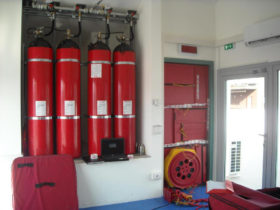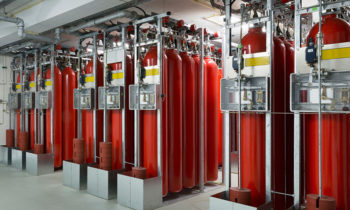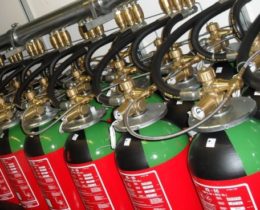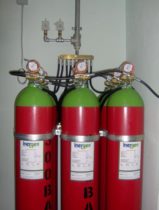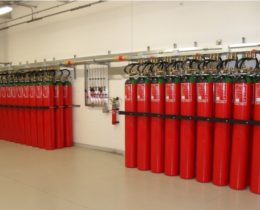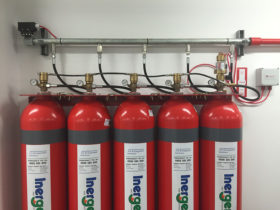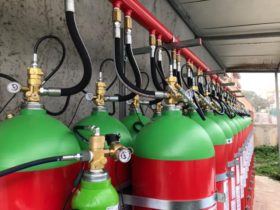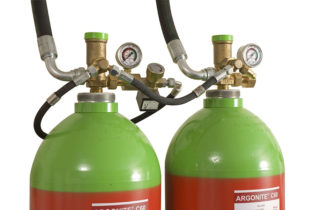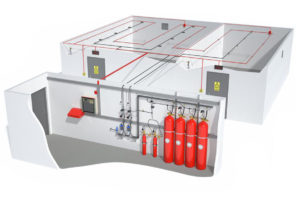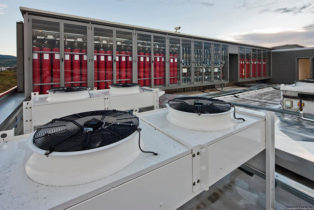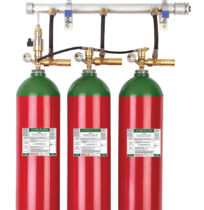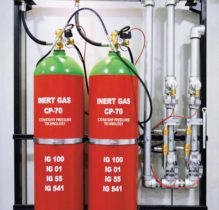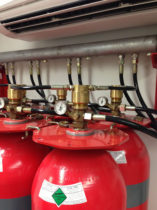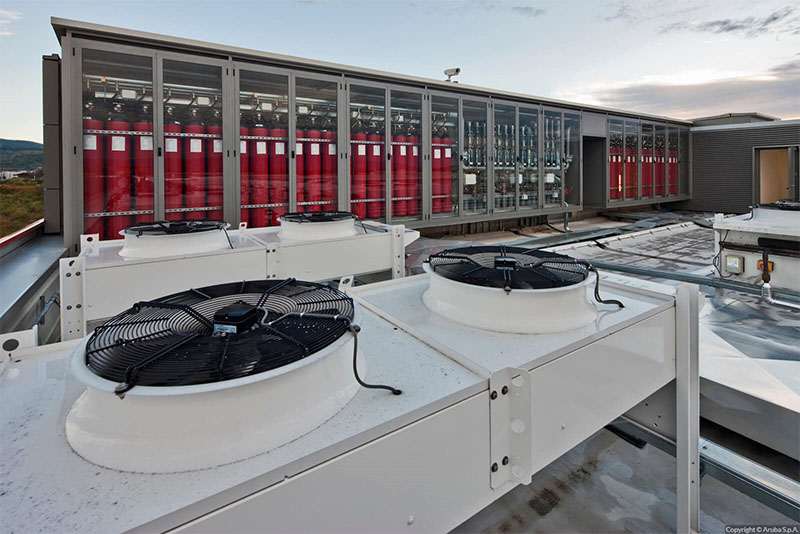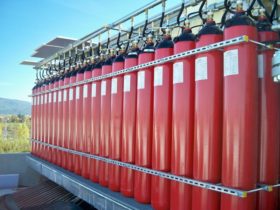
Inert gas suppression systems use argon and nitrogen gases and their mixtures as an extinguishing agent and are based in the principle of reducing the oxygen concentration inside the protected hazard. The oxygen concentration is minimized by the application of inert gas until it reaches a level where combustion is no longer supported. Each system is designed so as to decrease oxygen to a specific level. When discharged, inert gas is quickly and uniformly distributed within the enclosure, achieving design concentration in 60 seconds.
Argon and nitrogen it is naturally present in the atmosphere, therefore its green-house effect is nil and its ozone layer depletion potential is zero. It is chemically inert, non-conductive, colourless, odourless and flavourless. inert gas is non-corrosive and may be used at normal temperatures with such materials as nickel, steel, stainless steel, copper, brass, bronze and plastics.



